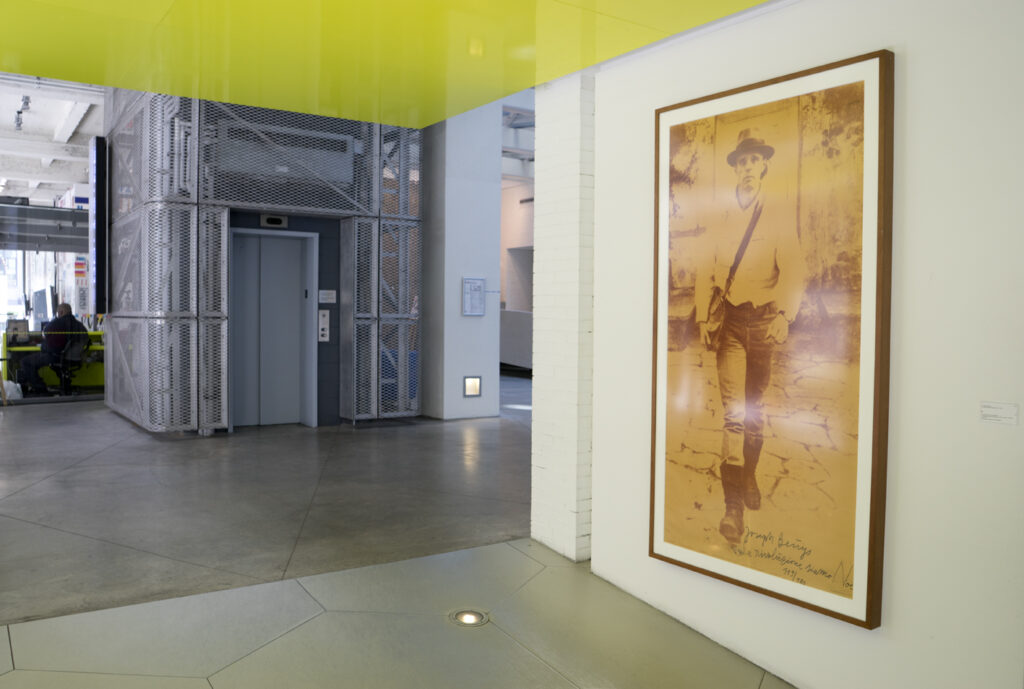
I encounter the Joseph Beuys piece—La Rivoluzione Siamo Noi—as I walk into the Parsons’ building on 2 West 13th Street. There is Joseph—walking out of the frame and into the busy sidewalk of 13th Street. And seeing this piece daily makes me feel like I actually know Joseph and I wonder how he feels about his odd location in the University. I keep imagining he should be placed in a space that The New School for Social Research (NSSR) uses more frequently but I don’t know if he really fits in there either. I am not sure what familiarity a philosophy or anthropology student might have with Joseph, but then, I also don’t know how many students at Parsons know much about his work. Art can’t be everything to everyone all the time.
Joseph Beuys emphasized social action (his performance pieces, installations and teaching) and in this regard he was a catalyst for public discussions about the role of the artist in society. In his work, he combined personal narrative and memory with social and political history, always prioritizing social engagement. In the broadest sense of the term, Joseph was a public intellectual. Through his work, his persona, and his teaching he expanded the space for public discussion and dialogue around a variety of topics always prioritizing the idea of democracy.
When I think about the University, I think about the ideals and ideas of the founding members: The original founding members included Charles A. Beard, Thorstein Veblen, John Dewey, and James Harvey Robinson. “Fourteen years before Hitler launched a Reich by burning books and purging universities, those initiators were distraught at limited wartime freedom in the United States and deeply concerned about administrative barriers to free inquiry in the academy. From early 1917, they dreamt of and planned for a “new school,” a far reaching alternative to mainstream higher education, a place where a more free, more egalitarian, more tolerant, and more rational society could be imagined and furthered by disciplined critical inquiry.” This is a quote from a lecture that Ira Katznelson gave in 2008 commemorating the inauguration of the University in Exile 75 years ago. But we can extend these ideas to the entire University and all of its divisions. Intellectual freedom, critical inquiry and a commitment to social justice are integral to the missions of all of the divisions and yet there is difficulty in imagining ourselves as one institution in a meaningful way. We struggle with it, and I think this struggle is somehow captured by the awkward placement of Joseph Beuys: by an elevator—looking out to a street always under construction—stepping into the sidewalk and walking off.
Imagine Joseph as a student here. Where would he take courses? NSSR, Parsons, or Lang?
Public Engagement?
Imagine Joseph as a faculty here—where would his home be?
Imagine Joseph as a staff member here. How would his presence change the way in which we work together?
Sarah Farsad
Staff, Parsons The New School for Design

